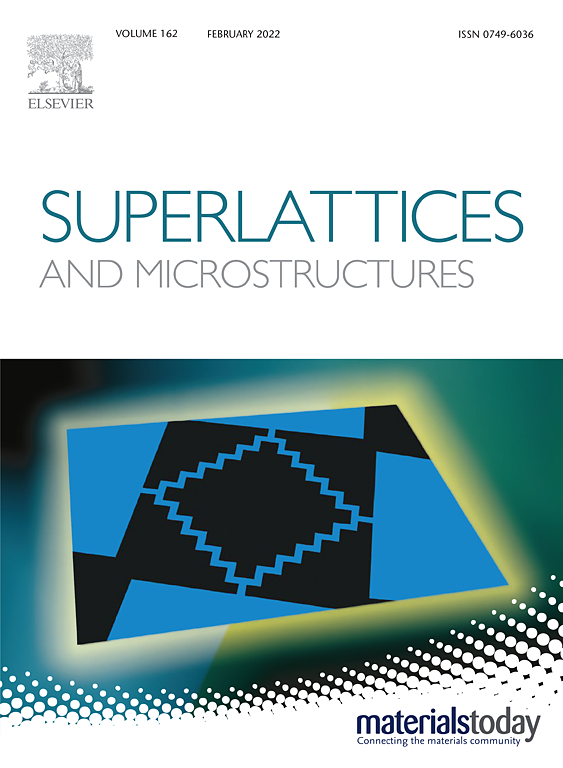A critical review of the mechanical properties of CoCrNi-based medium-entropy alloys
IF 3.3
3区 物理与天体物理
Q2 PHYSICS, CONDENSED MATTER
引用次数: 29
Abstract
The CoCrFeMnNi alloy is one of the most notable first-generation high-entropy alloys and is also known as a Cantor alloy. This alloy was first proposed in 2004 and shows promising performance at cryogenic temperatures (CTs). Subsequent research has indicated that the equiatomic ternary CoCrNi medium-entropy alloy (MEA), as a subset of the Cantor alloy family, has better mechanical properties than the CoCrFeMnNi alloy. Interestingly, both the strength and ductility of the CoCrNi MEA are higher at CTs than at room temperature. CoCrNi-based alloys have attracted considerable attention in the metallic materials community and it is therefore important to generalize and summarize the latest progress in CoCrNi-based MEA research. The present review initially briefly introduces the discovery of the CoCrNi MEA. Subsequently, its tensile response and deformation mechanisms are summarized. In particular, the effects of parameters, such as critical resolved shear stress, stacking fault energy and short-range ordering, on the deformation behavior are discussed in detail. The methods for strengthening the CoCrNi MEA are then reviewed and divided into two categories, namely, modifying microstructures and adjusting chemical compositions. In addition, the mechanical performance of CoCrNi-based MEAs, including their dynamic shear properties, creep behavior and fracture toughness, is also deliberated. Finally, the development prospects of CoCrNi-based MEAs are proposed.cocrni基中熵合金力学性能综述
CoCrFeMnNi合金是最著名的第一代高熵合金之一,也被称为康托合金。该合金于2004年首次提出,在低温(ct)下表现出良好的性能。随后的研究表明,等原子三元CoCrNi中熵合金(MEA)作为Cantor合金家族的一个分支,具有比CoCrFeMnNi合金更好的力学性能。有趣的是,CoCrNi MEA在ct下的强度和延展性都比室温下高。cocrni基合金在金属材料界引起了广泛的关注,因此总结和总结cocrni基MEA研究的最新进展具有重要意义。本文首先简要介绍了CoCrNi MEA的发现。总结了其拉伸响应和变形机理。重点讨论了临界分解剪应力、层错能和短程有序等参数对材料变形行为的影响。综述了强化CoCrNi MEA的方法,并将其分为两类,即改变微观结构和调整化学成分。此外,还研究了cocrni基MEAs的力学性能,包括动态剪切性能、蠕变性能和断裂韧性。最后,展望了基于cocrni的mea的发展前景。
本文章由计算机程序翻译,如有差异,请以英文原文为准。
求助全文
约1分钟内获得全文
求助全文
来源期刊

Superlattices and Microstructures
物理-物理:凝聚态物理
CiteScore
6.10
自引率
3.20%
发文量
35
审稿时长
2.8 months
期刊介绍:
Superlattices and Microstructures has continued as Micro and Nanostructures. Micro and Nanostructures is a journal disseminating the science and technology of micro-structures and nano-structures in materials and their devices, including individual and collective use of semiconductors, metals and insulators for the exploitation of their unique properties. The journal hosts papers dealing with fundamental and applied experimental research as well as theoretical studies. Fields of interest, including emerging ones, cover:
• Novel micro and nanostructures
• Nanomaterials (nanowires, nanodots, 2D materials ) and devices
• Synthetic heterostructures
• Plasmonics
• Micro and nano-defects in materials (semiconductor, metal and insulators)
• Surfaces and interfaces of thin films
In addition to Research Papers, the journal aims at publishing Topical Reviews providing insights into rapidly evolving or more mature fields. Written by leading researchers in their respective fields, those articles are commissioned by the Editorial Board.
Formerly known as Superlattices and Microstructures, with a 2021 IF of 3.22 and 2021 CiteScore of 5.4
 求助内容:
求助内容: 应助结果提醒方式:
应助结果提醒方式:


